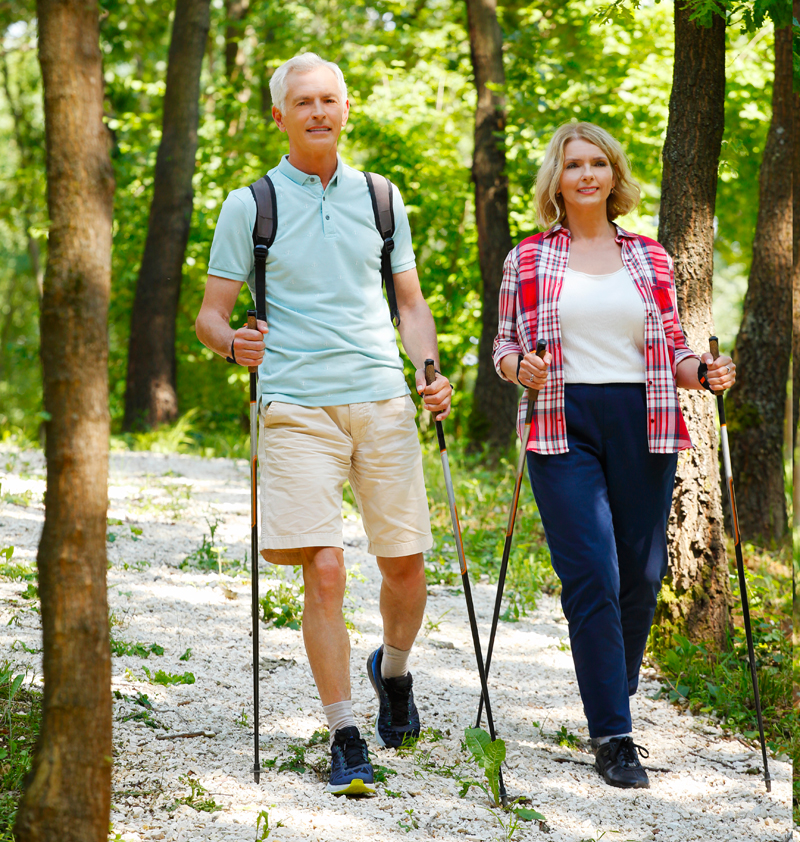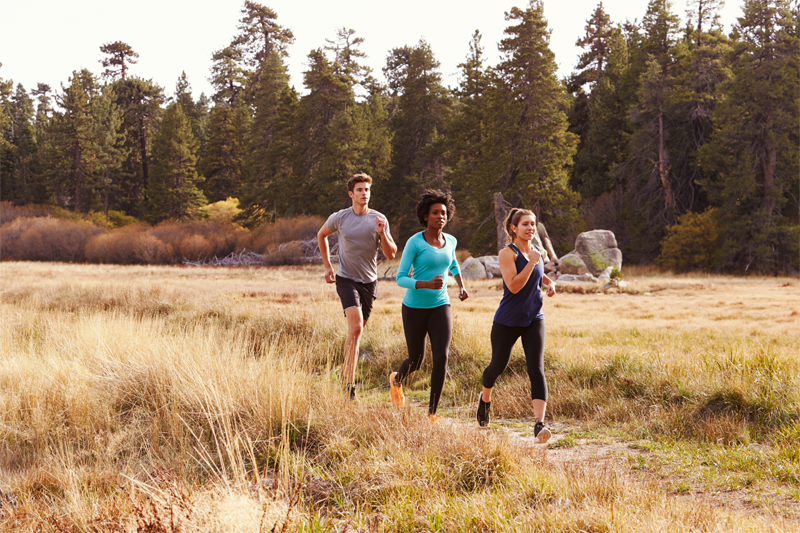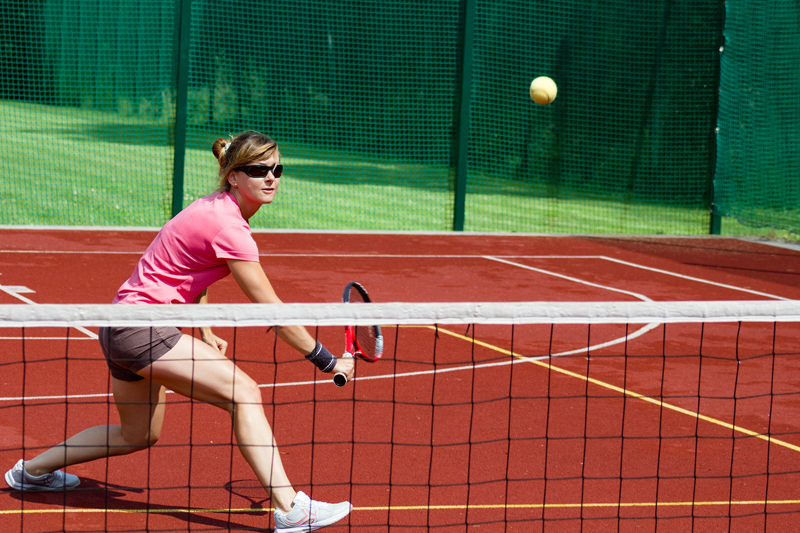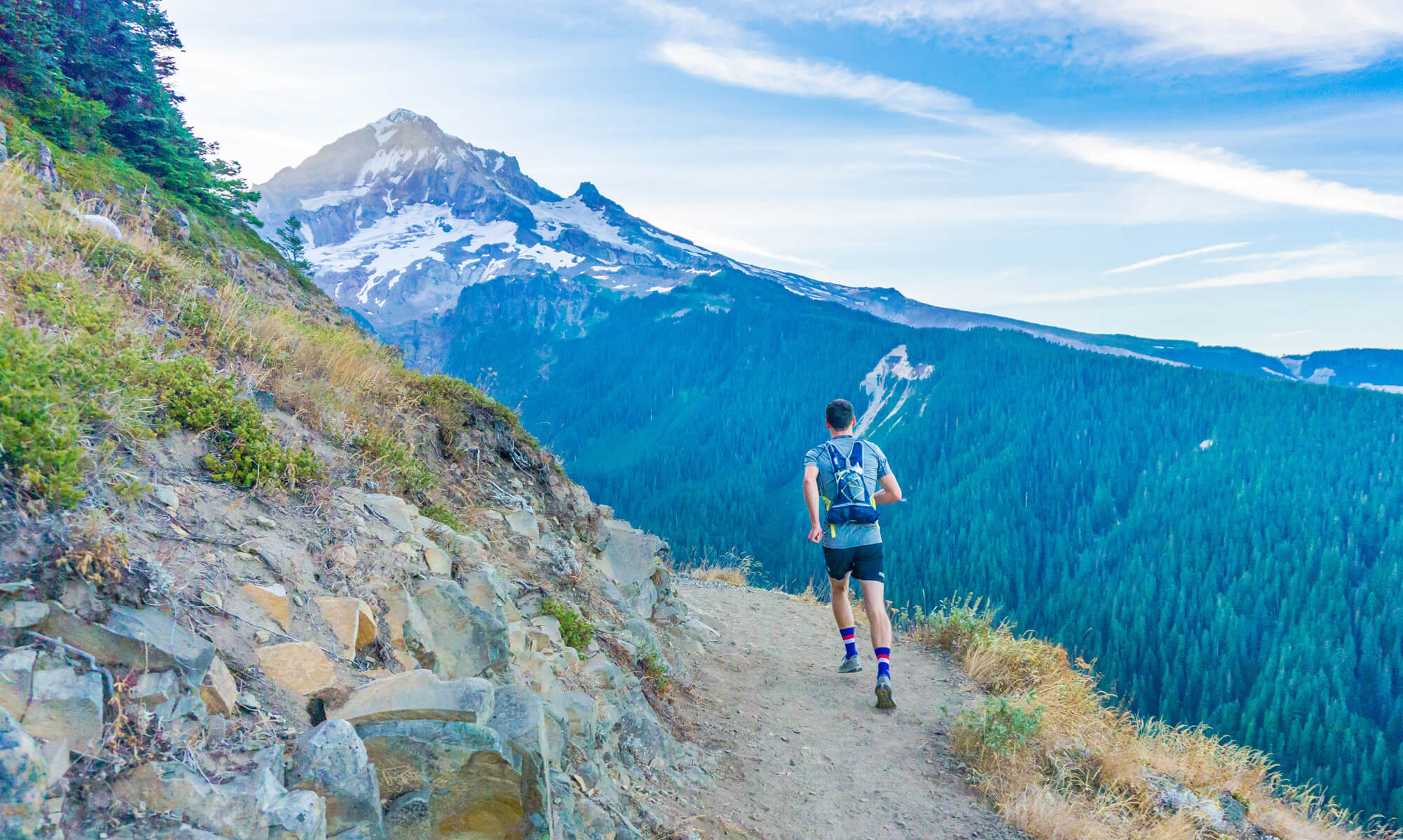The return to sports activities
If you have received effective FHL treatment, you will need to relearn how to properly use your foot/feet. Since FHL is a condition that affects the entire biomechanics of the musculoskeletal system, you will need to relearn how to use your entire body harmoniously.
If you already practiced a specific sport before the FHL treatment, relearning basic movements is recommended. For complex activities such as ball sports with abrupt stops and starts, changes of direction, etc., this relearning may require several dozen hours of adaptation. Releasing the FHL allows for smoother, more stable movements that will be all the more efficient.
If you were not an assiduous practitioner of a specific sport, it is advisable to return to gradual physical activity after releasing the FHL and for this, Nordic Walking is particularly suitable.

Nordic Walking is an outdoor activity that has the advantage of being practicable in all seasons. This is an accelerated active walk with trekking poles usually made of composite materials, it does not require a very high level of fitness and is accessible to a great number of people of all ages. The use of trekking poles is a key part of this activity.
Nordic Walking makes it possible to straighten the body, align the spine by reducing its overly accentuated curvatures and bring the pelvis forward by promoting good contraction of the gluteal muscles. In this position, the progress of the steps is easily achieved with longer strides and support now that the FHL is released. Beyond the biomechanical aspect, Nordic Walking is a complete sport which allows stimulation of all the body’s muscles and, if it is practiced on slightly uneven terrain (forest paths, pastures, mountains), adds a beneficial proprioceptive stimulation element.

At a higher level and if there are no contraindications, running is also an activity of choice after a release from FHL. However, running can be traumatic for the joints and for the musculoskeletal system in general if it is not performed correctly or too intensively. If you were not a regular runner before your operation or if you have joint problems or are overweight, we do not recommend intensive running for the over 40. Obviously, this restriction must be considered on a case-by-case basis. However, an activity with impact such as running practiced moderately (less than 20km per week) has undeniable beneficial effects on the body. For the correct practice of this activity, it is recommended to call on professionals who can teach you how to run correctly. Sustained and quality abdominal-lumbo-pelvic strengthening work makes for a virtuous practice of this sport.
Well-being of our feet
It’s worth mentioning that the Western way of life with an almost permanent wearing of shoes is harmful for the health of our feet. The foot is a part of the body with a lot of sensory effects and a complex architecture. Wearing shoes cuts off the sensitive stimuli that should normally reach our feet from the different types of ground on which they rest. In addition, the shoe with its rigid structure, provides external support to the foot which relieves it of its structural and dynamic function, and generates deconditioning and weakening of its muscles. Our feet need to be able to move freely and be stimulated by the surfaces they rest on and the weight we apply to them. With this in mind, all barefoot activities are beneficial for our feet. Yoga, martial arts and gentle barefoot gymnastics are recommended activities to regain the movement of our feet.

Pivot sports
The return to pivot or pivot-contact activities requires specific preparation. We will pay particular attention to training the sequences, the starts, the changes of direction by working on the explosiveness at the muscular level. The quality of the ground anchor is essential and will be trained on increasingly unstable planes in sneakers first and then barefoot. The footwear is very important and must in principle ensure a minimum of pitch during the unrolling of the step. Certain casts or plantar supports can be a useful supplement, in particular for skiing.
Learn more
Your health through Nordic WalkingRunning: balance and prevention
Shoe: minimalist, maximalist?
 EN
EN  DE
DE  ES
ES  FR
FR 